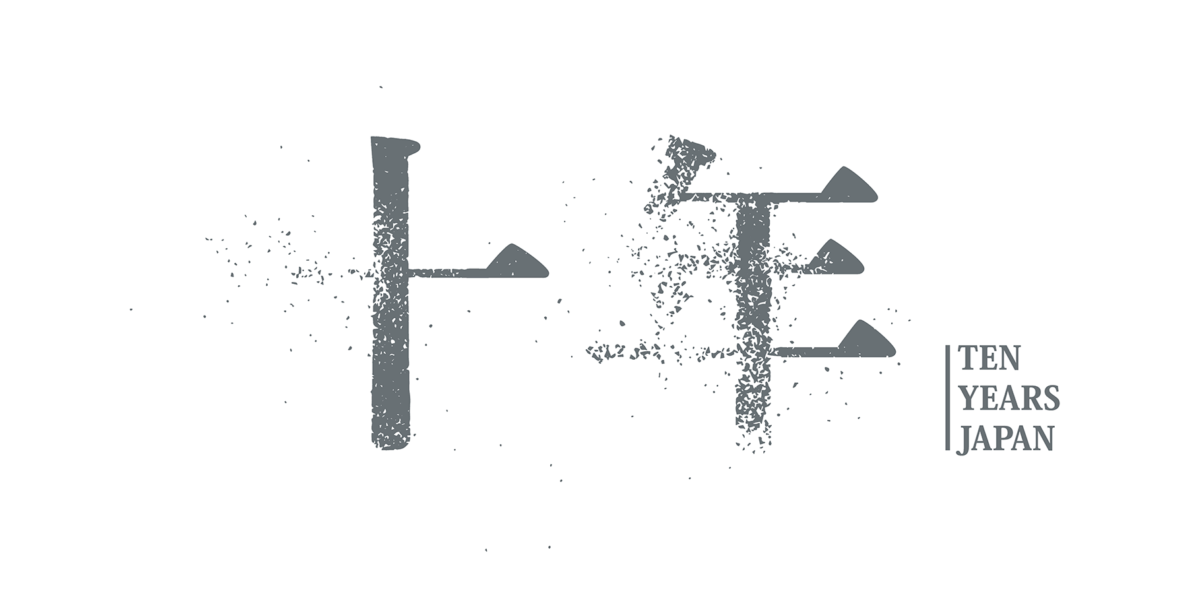There was considerable anxiousness in the days leading up to the “Ten Years Japan” press screening. This is a project I’d been keeping my eye on and as information was released, my enthusiasm for the movie began to build as did my expectations. Could it live up to the Hong Kong version? I was guardedly hopeful. However, I was equally concerned about the typhoon which was forecast to be around the Tokyo/Kanto area the day of the screening. I had originally intended to go to an earlier screening date, but work necessitated a postponement. The typhoon eventually raced passed the Kanto area much faster than expected leaving unusually hot, summer-like conditions in its wake that day, entailing a little toil on the journey to the Shochiku building in East Ginza. Compared to the Kinohaus theater where I am accustomed to seeing press screenings for independent movies and smaller productions, the screening room at Shochiku was certainly roomier with wider seats and ample legroom, though the size of the screen and room itself did not seem much larger. Taking a quick scan of the other audience members, I spotted Teruoka Sozo, the Programming Director of Osaka Asian Film Festival a few seats away in the next row. I also recognized a few other faces but could not recall or place the names. My apologies to you if you were there. After a brief greeting by Fujimura Akiyo, one of the participating directors, the film began.
The Movie
PLAN75
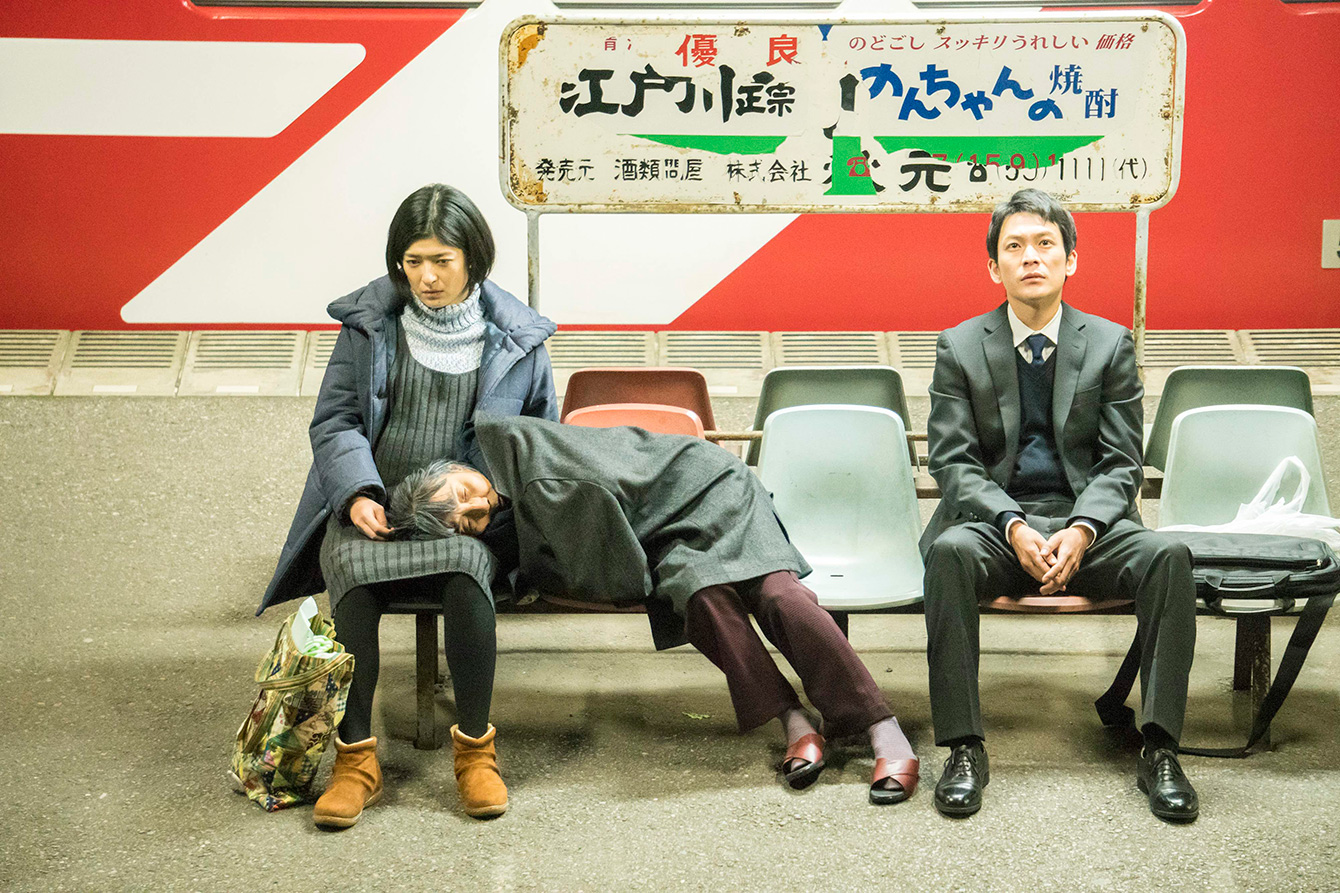
A powerful first salvo, nothing more needs to be said about Hayakawa Chie’s PLAN75 beyond the glossy promo video which opens the movie for the future government’s initiative at dealing with Japan’s aging population. The promise versus the realities confronting the program’s participants and the civil servant tasked with conducting consultations and “fulfillment” with the elderly (think insurance salesman in a Logan’s Run world) are tragic and woeful in all respects. As one elderly man who submits to the program says: “Is a long life a disgrace?”
Mischievous Alliance
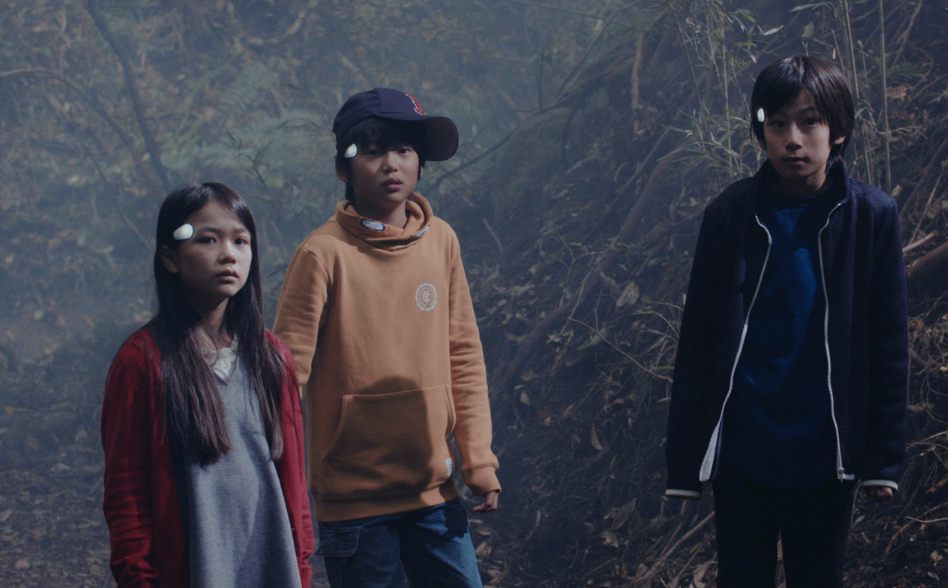
Today’s advancement toward A.I. and big data influencing our lives is given an intriguiging extrapolation in Kinoshita Yusuke’s short. The algorithms serving as annoyances or conveniences today are determining the future path of children as personified by Promise, a HAL-like ever watching eye and artificial voice. When thoughts or actions begin to create deviations from its data recommended life path, Promise attempts a “stern talking to” before resorting to negative behavioral reinforcement–a blast of ear piercing music in this case. But there is something inherently unbridled in children that society (and now an A.I.) has always attempted to condition out of them. The three “miscreants” of the title act out of a pure sense of what seems right–the rules of society and the voice of Promise be damned. In doing so, they learn about themselves and one another, something even the A.I. manages to acknowledge as not erroneous. It’s a shame societies are not as easy to upgrade.
DATA
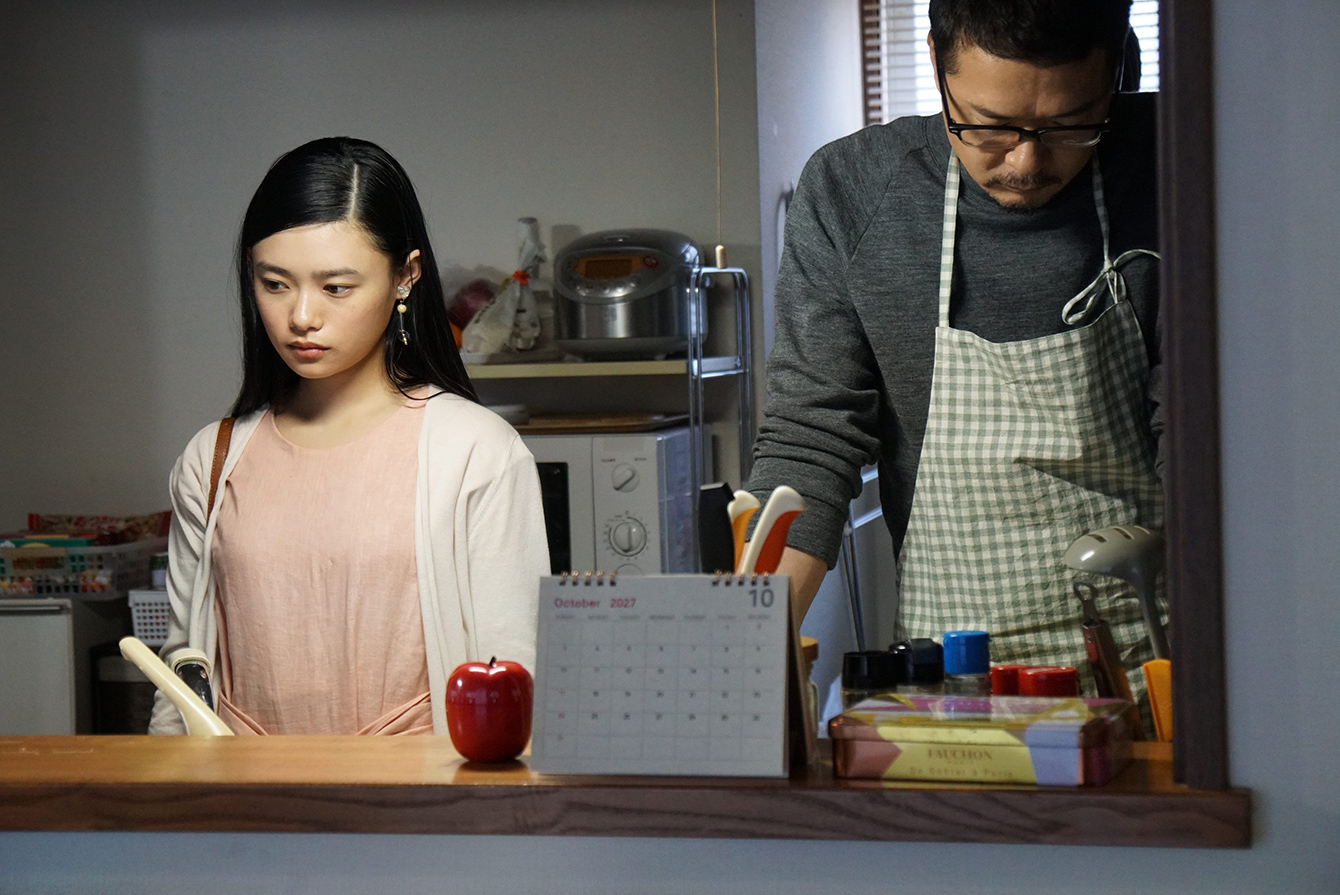
Tsuno Megumi imagines a time people leave digital inheritances for posterity. A daughter played by Sugisaki Hana gets access to her deceased mother’s memories from the cloud and tries to connect with the mother she never knew through photos, emails, message threads, etc. As with today, however, these pieces of data only give a hint of things and lack any context provided by experience and emotion. These are filled in by her father who at first seemingly fits the daughter’s suppostions based on the digital information alone until he makes it clear the one who knows her mother best is the one who shared time with her the longest. In so doing, the daughter begins to understand who her mother was rather than merely the person the data suggested. Tanaka Tetsushi is terrific as the father, but Sugisaki certainly steals the show. She delivers one particular line so well it was the only time the audience audibly reacted.
The Air We Can’t See
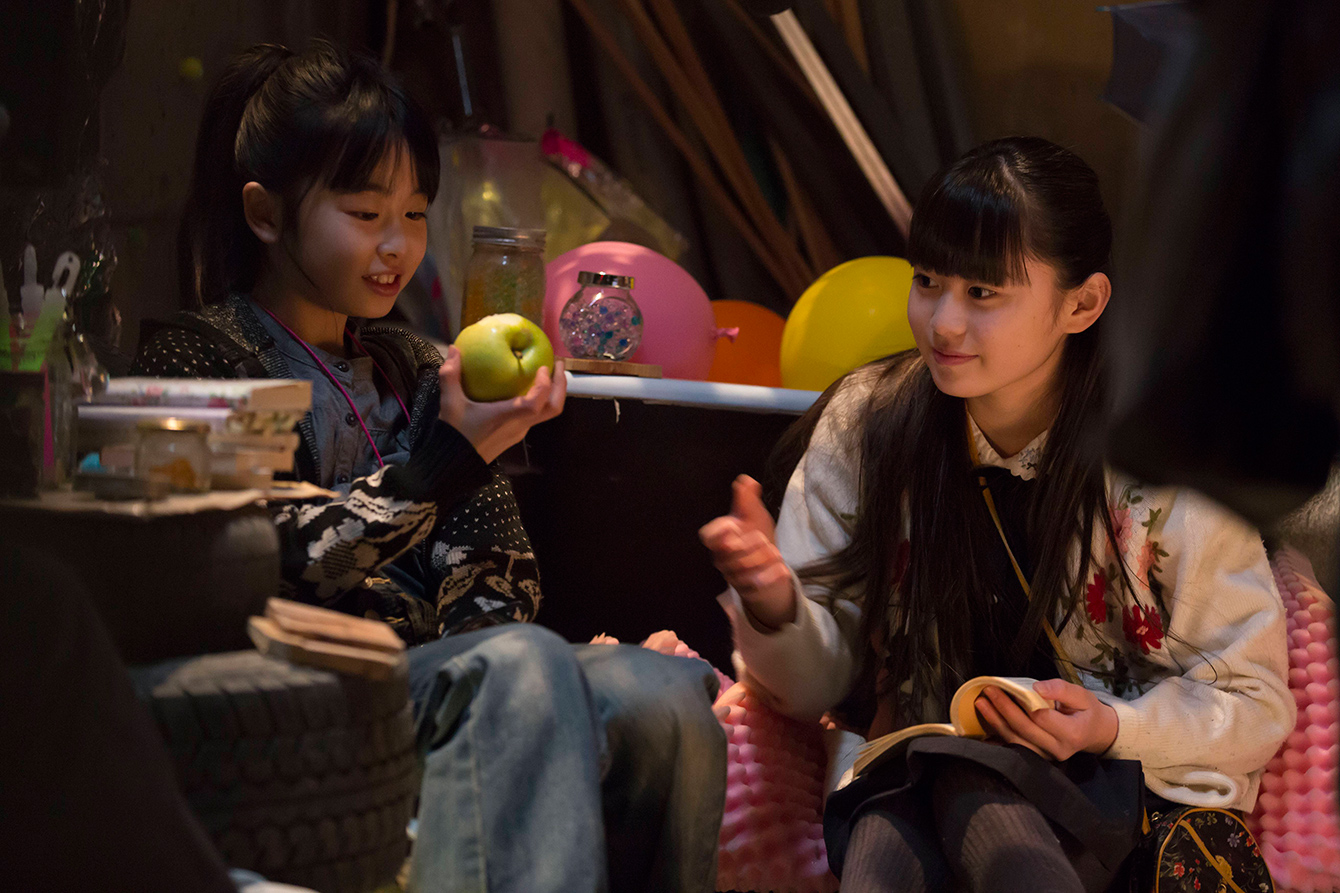
The only film in the omnibus to reference the Fukushima Nuclear Powerplant Accident, Fujimura Akiyo’s The Air We Can’t See starts off like a cautionary tale. The populace now lives in underground, concrete bunkers for fear of radioactive contamination and have been doing long enough for infants taken down or birthed there to have grown never knowing the “world above”. But despite warnings about the dangers of that world or anything from it, Mizuki and Kaede are curious, fascinated by “artifacts” from the surface and what they imagine it is like up there. As children are aught to do, what is forbidden is incentive for doing the opposite. Mizuki and Kaede’s inquisitiveness is practically uncontainable. So, when a tape of the sounds from above apparently made by Kaede also hint at an escape, Mizuki decides to venture out to what she believes is true about a world she has never seen. The film is a powerful reminder of how adults can suffocate their young with fear (the air they can’t see) instead of allowing them to hope for and work toward a brighter future. Fujimura must be applauded for truly holding back through cinematography and lighting until the very last to show us Mizuki’s fate.
For Our Beautiful Country
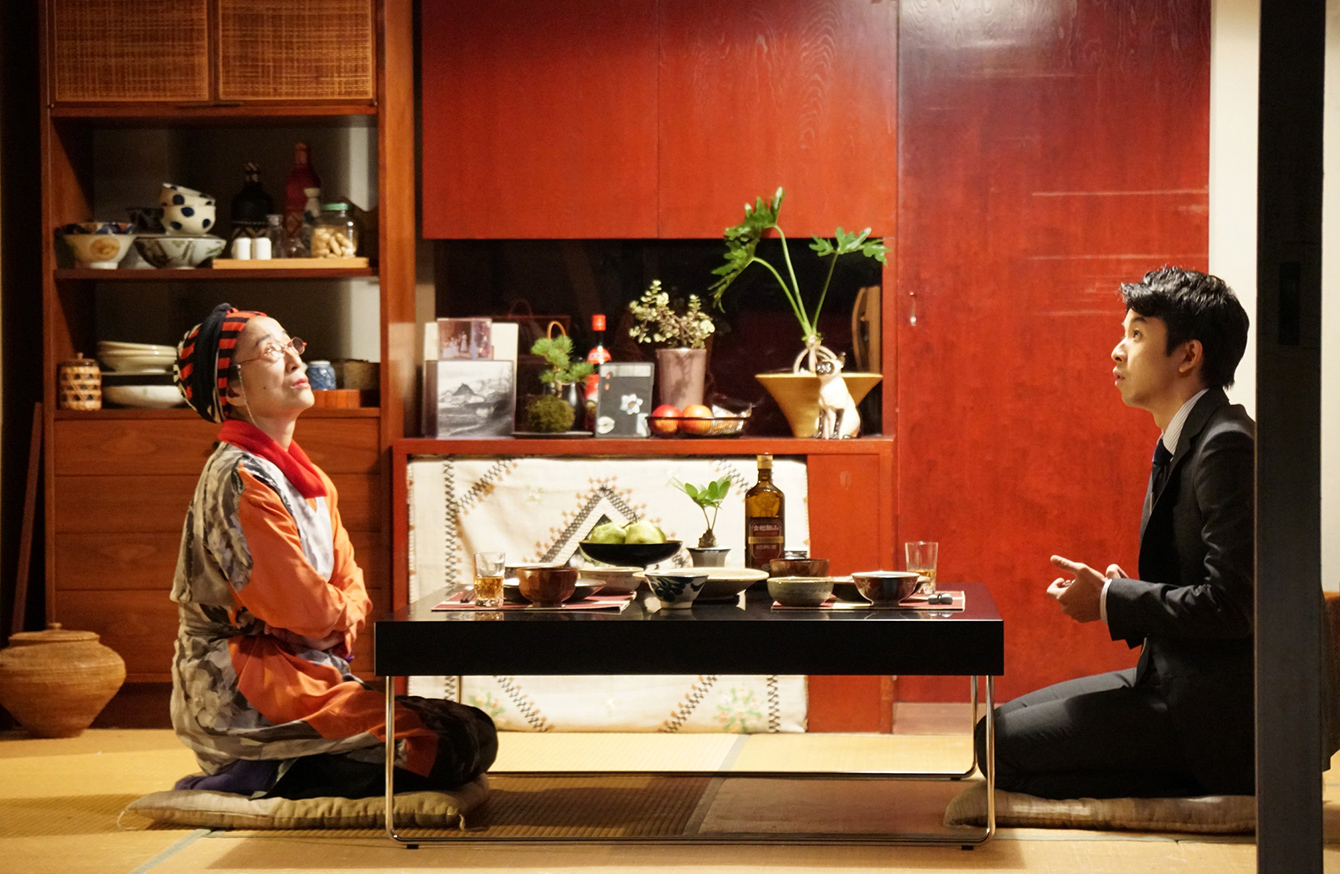
Opening on a military recruitment poster, the fifth and final episode centers not so much around military conscription as it does the secret behind the rejected poster design. Taiga plays an advertising agency employee placed in charge of the publicity campaign. He visits the home of the poster’s designer, Amatatsu (Kino Hana) to apologize for the time spent working on the poster which was deemed too antiquated and lacking appeal with a younger demographic. What should have been a basic courtesy call turns into a day spent with Amatatsu as we learn more about her and more importantly the source of a design motif used on the poster. The story’s premise is deceptive but one that is ultimately very relevant for 2018 Japan–the importance of conversations with those who have direct experience and/or memory of war as their numbers, therefore their voices, gradually dwindle. Cliches aside, the moral of the story truly is: “Those who don’t remember the past are doomed to repeat it.”
A Japanese Approach
The original Ten Years omnibus film was made under a certain political climate during the Umbrella Movement in Hong Kong at the time. The emotions of those events fueled the political fire of that film. To be honest, my personal feelings for the current socio-political climate in Japan swayed my expectation for a Ten Years Japan with as much snarl and teeth as the original. The final product is neither “angry” nor “antagonistic” and intentionally so. As a representative from distributor Free Stone Productions told me afterward, the team wanted to comment on Japan’s present and future but in a distinctively Japanese manner. The film must play domestically so an insurgent tone could potentially turn away audiences as well as media coverage. The movies are far more subtle in making their point and I was surprised how well the approach works. My immediate intuition pointed to Executive Producer Kore-eda Hirokazu’s guiding hand in the development of the project. Afterall, he has proven a master of understated stories about human relationships through which larger themes can also be inferred. The approach makes each of the episodes “viewer friendly” and arresting.
Of the five short movies, only the two bookends possess the most political undertones. Plan75 is a send up of public policy–a solution to a problem that is less about public good than administrational convenience. One only need to recall the lecture by a Plan 75 senior official given to the civil servants regarding who to target (and who not to target) suggesting not only the aged, but anyone who can’t contribute to society such as the poor or infirm. It reminded me of a mass murder case at a care facility in Japan for the infirm and mentally ill committed by a man who claimed he did it in order to create a more “beautiful country.” That, of course, is part of the final episode’s title and also a phrase touted by Prime Minister Abe himself. Therefore, it is the one story to most directly reference his administration’s goal to alter the country’s pacifist constitution. Again, however, the movie is not about him or his political agenda, but on the importance of a generation to leave the country a better place; to encourage the next generation to do better if one fails in one’s own lifetime. That message is driven home by the only moment the movie breaks the fourth wall. It’s a poignant way to fade to credits.
The remaining three episodes are about family and children; a father and daughter becoming closer through reconnecting with an absent wife/mother; children learning to act for themselves despite social/educational pressures and how that actually brings them together; a mother trying to shield her daughter from harm as the daughter seeks to discover a future she’s imagined for herself. These are not heavy brushstrokes meant to deliver a message on protest banners, but tactile experiences designed to stir reflection rather than elicit reaction.
In Closing
The “Ten Years Project” has blossomed to also include entries from Taiwan and Thailand with perhaps more to follow in the future. The concept of the original is brilliant and applicable to any place as long as there are filmmakers willing to tackle the issues facing their country, allowing each to express not only their concerns but the uniqueness of their cultural identity as well. There are many themes which could have been taken up by Ten Years Japan (this writer would have liked to see something on journalism), but the issues of aging, technology, nuclear energy, and the public’s angst about war presented by Hayakawa, Kinoshita, Tsuno, Fujimura, and Ishikawa have special significance in Japan and are handled in a way as only they could–through affecting, sometimes humorous, intimate parables about its people.
